Text and Photos by Henrylito D. Tacio
From extreme adventures of mountain climbing and deep-sea diving to just walking over white sand beaches or having fun at night, Davao City has it. Visitors and guests will have a grand time during their stay in any place in the city.
With a land area of 244,000 hectares, Davao City is approximately 7.8 times the size of Cebu and three times that of the entire Metro Manila. It is a melting pot of more than a million people, both indigenous and migrants, now being acculturated into the mainstream of society, creating a uniquely cosmopolitan culture.
If you have only a few days in Davao, the first place to visit is the Philippine Eagle Center – home to the country’s bird icon – in Malagos, Calinan District. Leave your hotel early in the morning as the travel time is about one hour from the city to the center.
Once you enter the center, don’t be surprised if you find yourself in the midst of a forest. “This sanctuary stimulates the tropical rainforest habitat where we breed eagles in captivity,” explains Dennis Salvador, the executive of Philippine Eagle Foundation, Inc.
About two kilometers away from the eagle center is the Malagos Garden Resort. Here, you will marvel at the arrangement of flowers and ornamentals – in various forms and hues – scattered throughout the resort. Sculptures, done by national artist Napoleon Abueva, are displayed all over the place.
The next stopover is Eden Nature Park and Resort, a beautiful man-made resort nestled in the foothills of Mount Talomo in Toril. At 2,650 feet above sea level, it offers a breath-taking bird’s-eye view of the city and the Davao Gulf in the distance. Over 100,000 pine trees are growing in the area, comprising about 80 hectares—a plus: sky cycling, where you pedal your way through the sky.
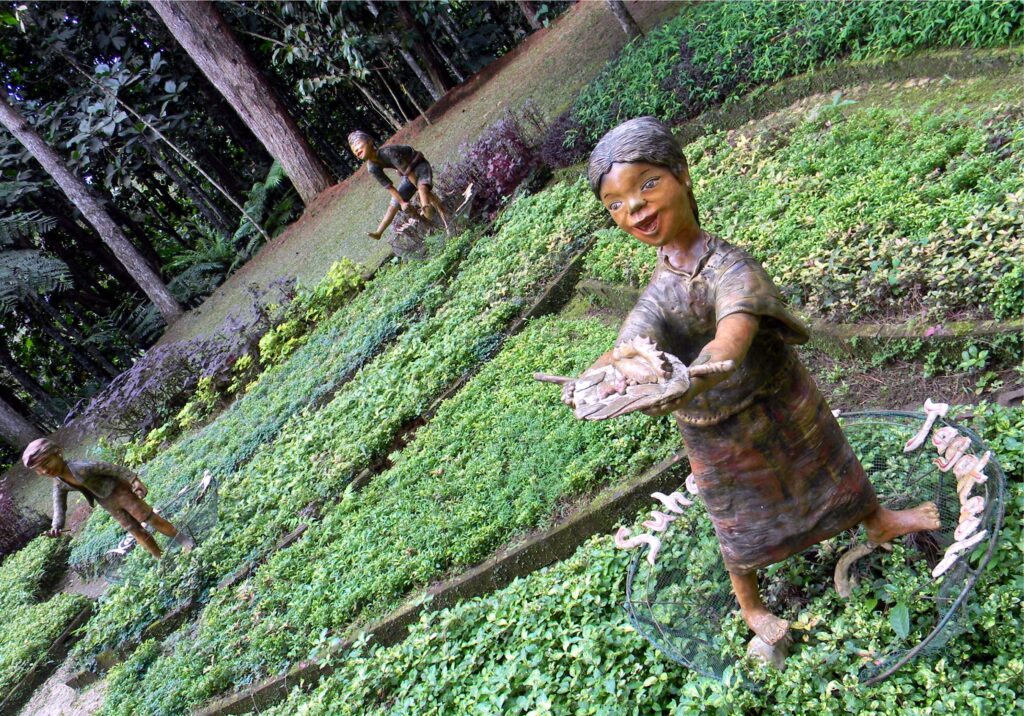
Village garden at Eden Nature Park 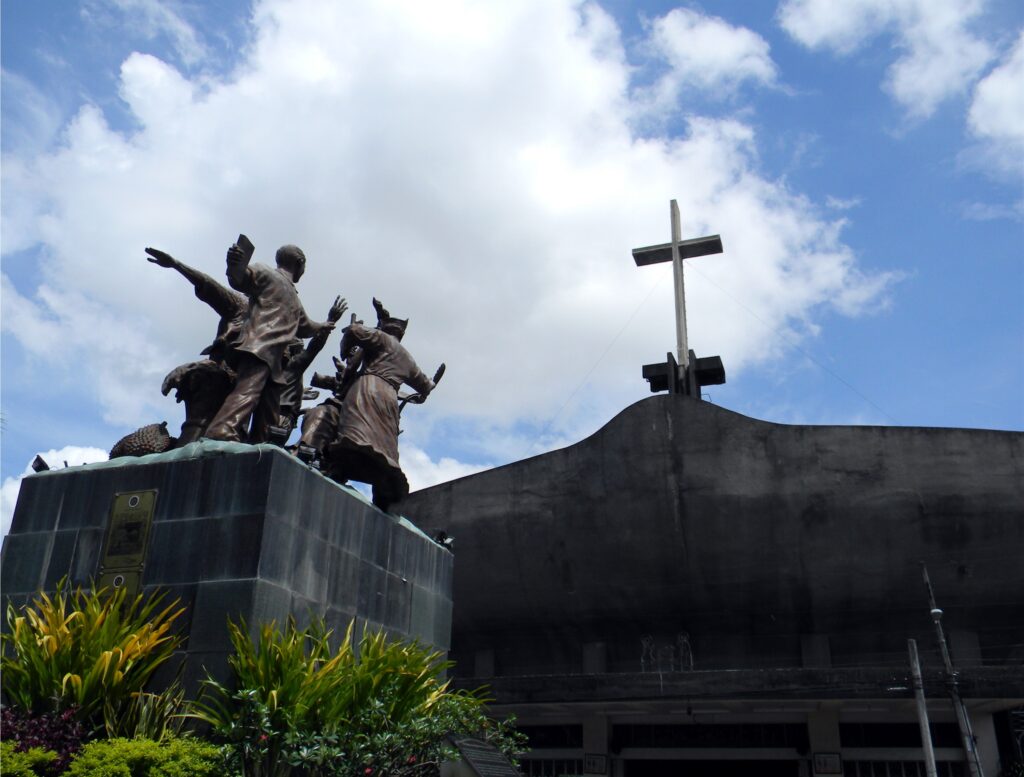
Freedom statue and San Pedro Cathedral 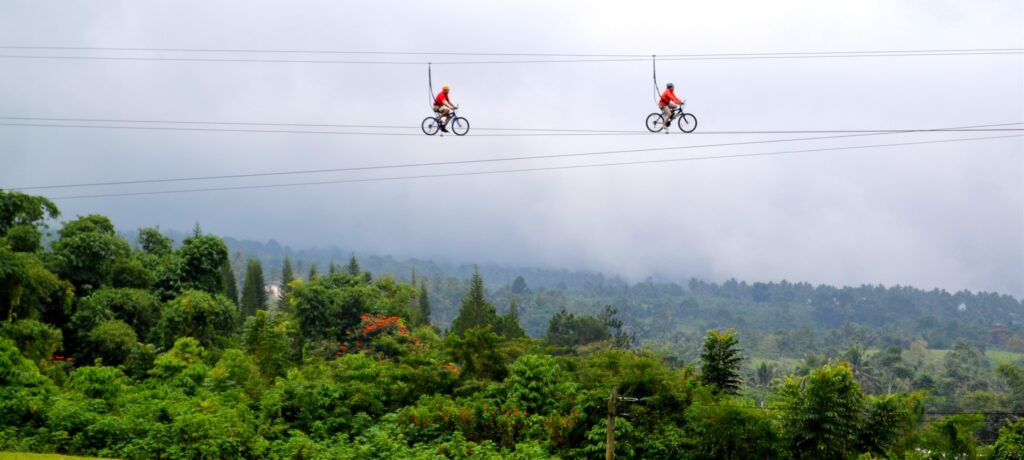
Skycycle
From there, you need to go to the Davao Crocodile Park, located at the Riverfront Corporate City along Carlos P. Garcia Highway in Ma-a. With about 700 crocodiles, the park makes waves as one of the famous tourist spots in the city. It is home to the country’s largest crocodile named Pangil, measuring over 18 feet in length.
“The park is an establishment that showcases a state-of-the-art crocodile farming system in the Philippines,” says Philip “Sonny” Dizon, president of PSD Group of Companies, the mother company Davao Crocodile Park. “It has the most recent crocodile farm design equipped with modern facilities and equipment.”
Now, let’s do the tour in the heart of the city. Start at the city hall in San Pedro Street. A few distant walks are the legislative building, whose façade has the famous freedom statue designed by the talented Kublai Millan. Adjacent to the statue is the historic San Pedro Cathedral.
Not far away is the city’s repository of its cultural and historical heritage – the Museo Dabawenyo in Pichon Street. It has galleries that showcase the local tribes’ cultures and way of living, artifacts, and information of the city’s history, and a hall of changing exhibits, art shows, and various educational enrichment activities.
Don’t miss going to the D’Bone Collector Museum (shades of one of those Smithsonian museums in Washington, D.C.) in barangay Bucana. You will be mesmerized to see a 41-foot or 12.4-meter long sperm whale (which has the largest species of the toothed whale). Bones and skeletons of snakes, tarsier, marine turtles, various fish species, different sizes of the mouths of sharks, and birds abound.
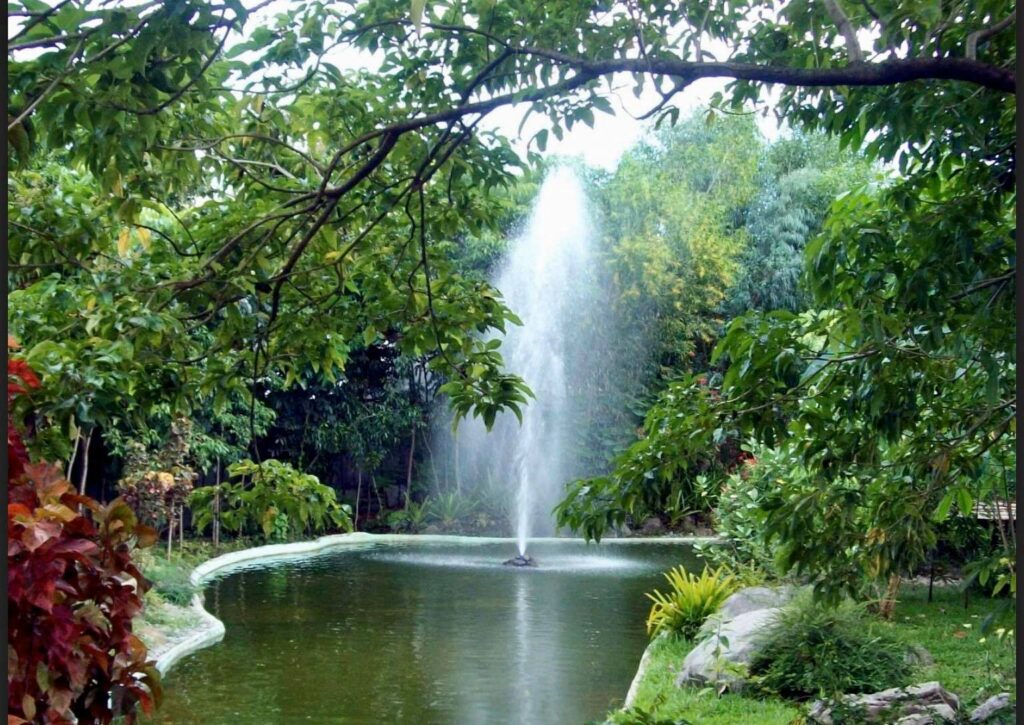
“Each group that goes to the museum gets a tour about the animals found in each of the displays. One of the things we show to them is how some of the animals have died due to humans throwing garbage into the ocean or canals and how these kill the whales and dolphins,” explains Darrel Blatchley, the museum’s curator and owner.
From there, take a taxi and tell the driver to bring you to People’s Park (yes, it’s Davao’s counterpart of Manhattan’s Central Park) in Legazpi Street. It’s a place where people gather around, stroll and cross bridges, watch man-made waterfalls, or sit under the beautiful trees.
The city is one of the world’s leading producers and exporters of mango, pomelo, banana, papaya, and mangosteen. Its fertile volcanic soil makes it most suitable for the sustained production of these tastiest tropical fruits in the country. Don’t miss eating the exotic durian, famous because of its spike and offensive scent (“It smells like hell, but tastes like heaven,” one scribe noted).
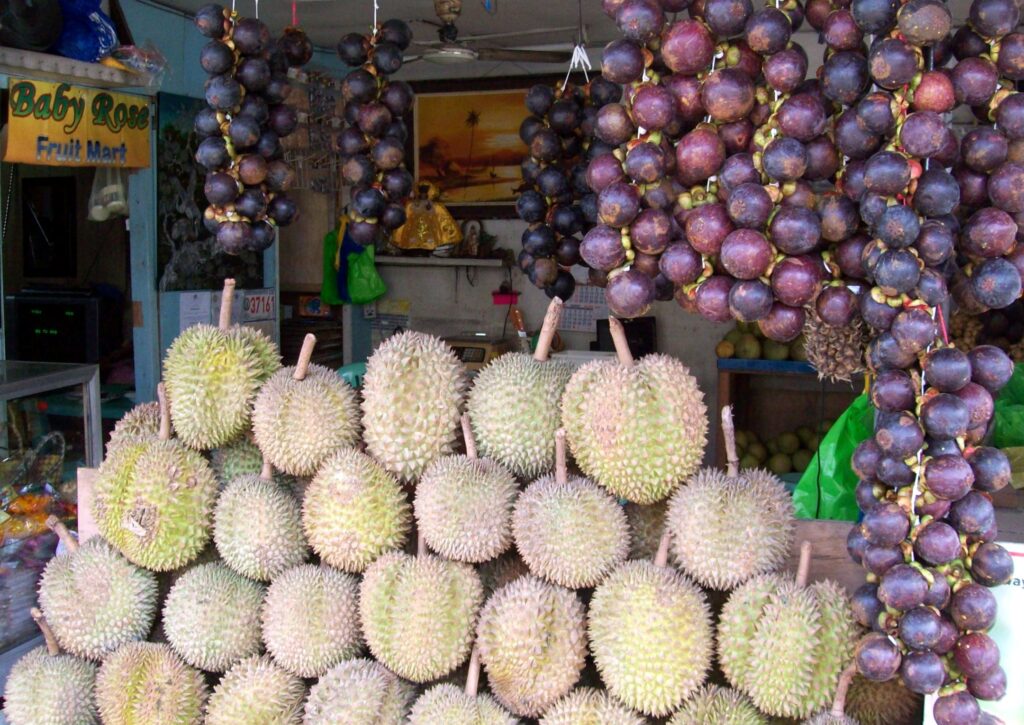
Durian and mangosteen 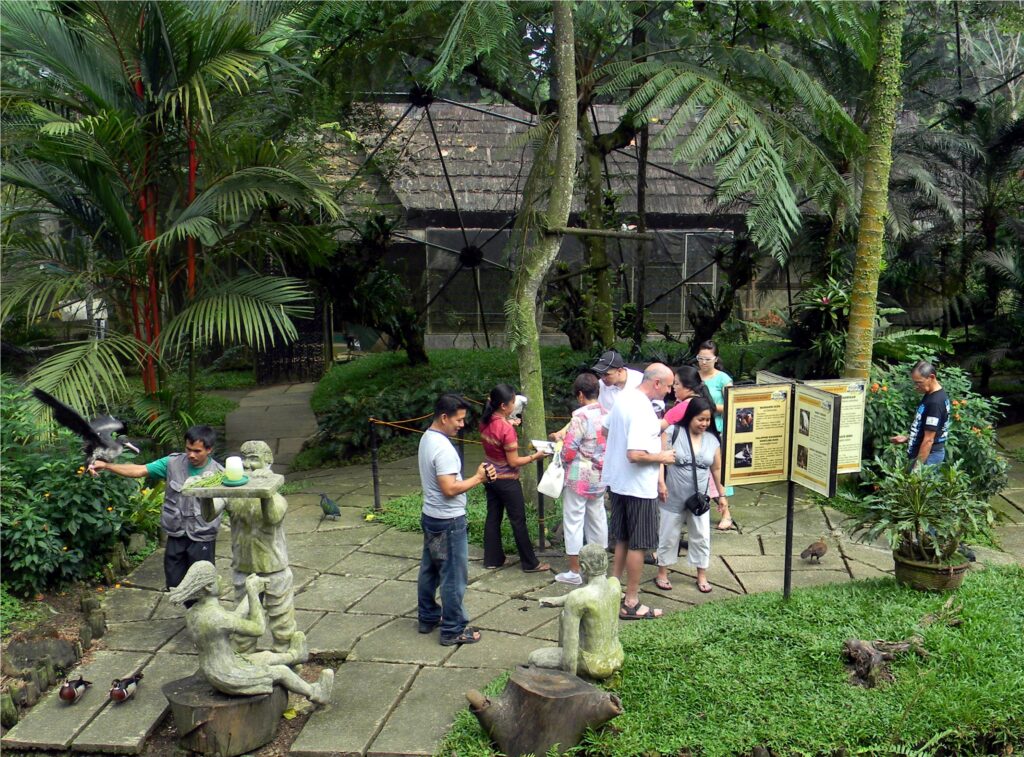
Close encounter with birds at Malagos Garden Resort 
D’Bone Collector Museum
If swimming is your thing, then go to the adjacent Island Garden City of Samal, which can be reached in just a matter of 10 minutes by boat. Highly recommended are the Pearl Farm Beach Resort and Paradise Beach Resort.
Welcome to Davao City!

